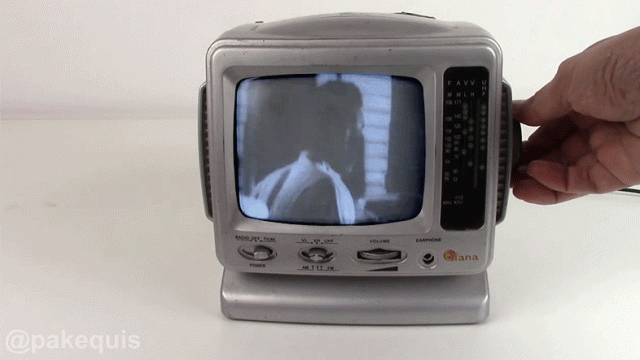Before you complain about there being nothing to watch on Netflix, check out Rodrigo Feliciano’s potent reminder of just how awful watching broadcast TV once was. Using a Raspberry Pi, this hacked black-and-white set simulates the classic TV experience using modern content.
Believe it or not, tiny analogue TVs that struggled to tune in to over-the-air broadcasts were a mainstay of kid’s bedrooms in the ‘80s and ‘90s, and were even something to brag about. Before then, black-and-white analogue TVs were a luxury. It’s almost impossible to even give away analogue tube TVs at this point, but Feliciano’s hack has found a novel way to breathe new life into a five-inch black-and-white portable set that was long ago abandoned.
That portability is key to the hack, since the emptied out battery compartment leaves plenty of room for other components. Without the batteries (which would have died quickly, anyway), the compartment had more than enough room to hide a Raspberry Pi and other electronics without requiring the TV itself to be opened or modified: a risky endeavour given the high voltages tube TVs relied on.
The Raspberry Pi’s composite video out made connecting the modern hardware to the ancient TV easy, and since it’s just about one of the worst ways to connect video equipment together, the resulting image quality is degraded by default, helping to sell the retro aesthetic. Content is randomly pulled from video files stored on the Raspberry Pi when turning the tuning knob on the side of the TV. Remember, before streaming came along, you could never really choose what you wanted to watch. Turning your TV’s tuning dial was like pulling the arm on a slot machine: sometimes you hit the big time (a classic The Simpsons rerun), but most of the time you didn’t.
Completing the retro TV effect is the use of a relay, which switches the Pi’s video output to random static in-between video files as they load. Today’s kids may groan at having to wait a few seconds while watching a spinning wheel on-screen as content loads, but in decades past, you would get blasted with deafening static if you forgot to down the volume before changing the channel.

Leave a Reply